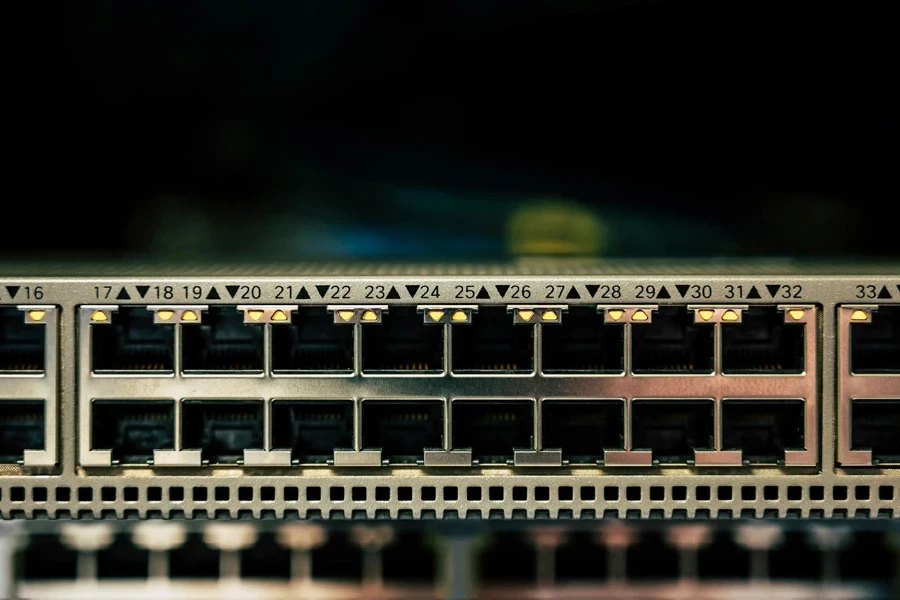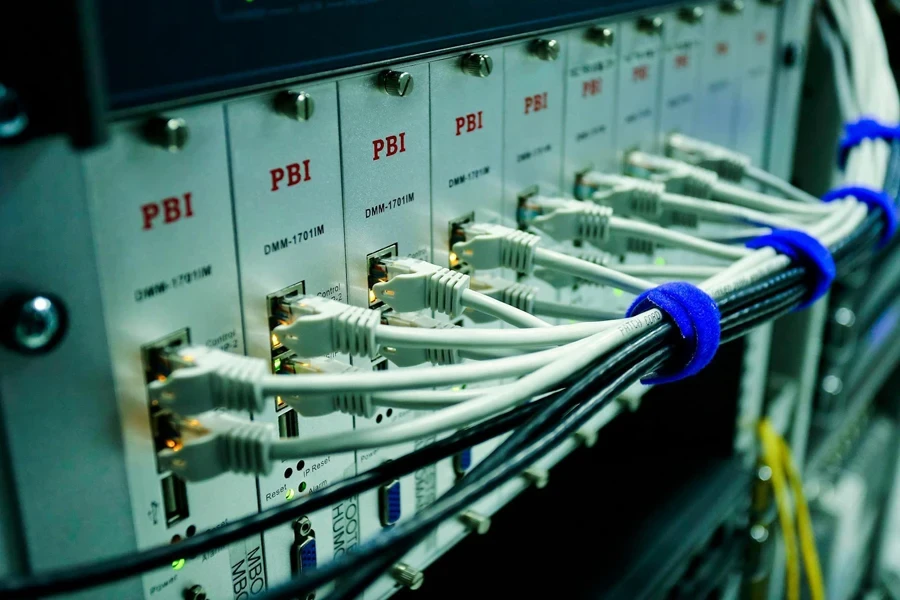Table of Contents
● Introduction
● Market overview
● Various types and their features
● Things to consider when selecting network switches
● Conclusion
Introduction
In the fast-paced realm of digital connectivity, network switches play an indispensable role in shaping efficient and robust network infrastructures. These devices not only facilitate the swift and secure transmission of data across networks but also form the backbone of data center operations that support critical applications in industries ranging from telecommunications to healthcare. As technologies like the Internet of Things (IoT), artificial intelligence (AI), and 5G continue to evolve, the demand for more sophisticated network switches increases, underscoring their significance in meeting modern network requirements. The right network switch can dramatically enhance the performance and scalability of a business’s network architecture, making the choice of switch a pivotal decision for IT managers and network administrators. Thus, understanding the various types of network switches and their features becomes crucial for optimizing network functionality and ensuring business continuity.
Market overview

Current market scale and projections
The network switches market is experiencing robust growth, projected to rise from USD 33.0 billion in 2023 to USD 45.5 billion by 2028, according to MarketsandMarkets. This growth, marked by a compound annual growth rate (CAGR) of 6.6%, is fueled by the escalating demand for data centers driven by burgeoning technologies such as the Internet of Things (IoT), artificial intelligence (AI), and 5G. These technologies not only necessitate substantial data processing capabilities but also extensive, reliable networking infrastructure, thus propelling the need for advanced network switches.
Challenges and opportunities
The market faces challenges, including the technological complexities associated with network switches, which make them susceptible to security vulnerabilities. High operational costs also hinder broader adoption. Despite these obstacles, opportunities abound, particularly due to the rising enterprise data volumes and ongoing technological advancements. The integration of edge computing, AI, and IoT across various industries requires network switches capable of handling increased data transfer rates and complex network management tasks. This dynamic has led to significant investments in network infrastructure to support scalable and efficient data transmission, presenting lucrative prospects for the network switches market.
Various types and their features
Modular switches

Modular switches provide unparalleled flexibility and are ideal for dynamic corporate environments where network needs are likely to evolve. These switches can be customized with various expansion modules to meet specific needs, including advanced security features, wireless services, and increased throughput capabilities. They are particularly valuable in scenarios where a network might need to scale quickly, such as in growing enterprise environments or data centers that anticipate future expansions. Modular switches support a range of interface cards and offer the capability to swap out modules without disrupting network service, facilitating seamless upgrades and expansions.
Fixed-configuration switches
Fixed-configuration switches are preferred for environments with stable network requirements due to their efficiency and lower cost. There are three main types within this category: unmanaged, managed, and smart switches. Unmanaged switches are suitable for simple setups where minimal configuration is required, offering cost-effective connectivity with no configuration fuss. Smart switches provide limited management features and are a good middle-ground solution, offering some layer of configuration at a lower cost than fully managed solutions. Managed switches offer the most extensive control features, including VLAN support, network monitoring, and advanced security protocols, making them ideal for networks that handle sensitive data or require high uptime.
Power over Ethernet (PoE) switches
Power over Ethernet (PoE) technology simplifies the deployment of networked devices by delivering power and data through a single network cable. This is particularly beneficial for installing devices in locations that lack convenient power outlets, such as ceilings for wireless access points or outdoor locations for surveillance cameras. The PoE switches can significantly reduce installation costs by eliminating the need for additional electrical wiring and power sources. Furthermore, PoE switches come in various models that can provide different power outputs to support devices with varying energy requirements, enhancing their applicability in diverse scenarios from office environments to industrial settings.
Things to consider when selecting network switches
Assessing network needs

When selecting a network switch, it’s crucial to assess the specific needs of a network, particularly in terms of user count and network complexity. The right type of switch can greatly influence network efficiency and scalability. For smaller networks with a stable number of users, a simple unmanaged switch might suffice, offering plug-and-play convenience without the need for configuration. In contrast, networks with a growing number of users and devices, especially those incorporating IoT devices, will benefit from managed or smart switches. These allow for greater control and adaptability, accommodating changes and expansions without significant reinvestment.
Speed and capacity requirements
The speed and capacity of network switches are fundamental to maintaining efficient data flow and handling large volumes of traffic without bottlenecks. The network switches come in various speeds, typically ranging from Fast Ethernet (10/100 Mbps) to Gigabit Ethernet (10/100/1000 Mbps) and, more recently, up to 10 Gbps or even higher. The choice of speed should align with the expected data transfer volumes. For example, networks that frequently handle large file transfers or stream high-definition video content will require switches with higher throughput capabilities, such as Gigabit Ethernet or 10 Gbps switches, to avoid latency and performance issues.
Management capabilities
The management capabilities of network switches play a critical role in ensuring network security and optimal performance. Firewalls.com points out that managed switches provide the ability to configure, manage, and monitor the network, which is essential for maintaining security protocols and managing network traffic effectively. These switches are ideal for larger networks that handle sensitive data or require high levels of uptime. They allow network administrators to create and manage VLANs, set up Quality of Service (QoS) parameters, and monitor network traffic for anomalies. Unmanaged switches, while simpler and more cost-effective, offer none of these controls, making them suitable only for smaller or less complex setups.
Conclusion

Selecting the right network switch is a strategic decision that can significantly impact the efficiency, security, and scalability of business networks. For resellers, understanding the diverse needs of clients—from small businesses requiring basic connectivity to large enterprises demanding advanced management features—is crucial in providing tailored solutions that future-proof their network infrastructures. As network demands continue to evolve with advancements in IoT, AI, and 5G technologies, offering the right mix of modular, fixed-configuration, and PoE switches can ensure robust performance and client satisfaction, ultimately driving business growth and customer loyalty.



